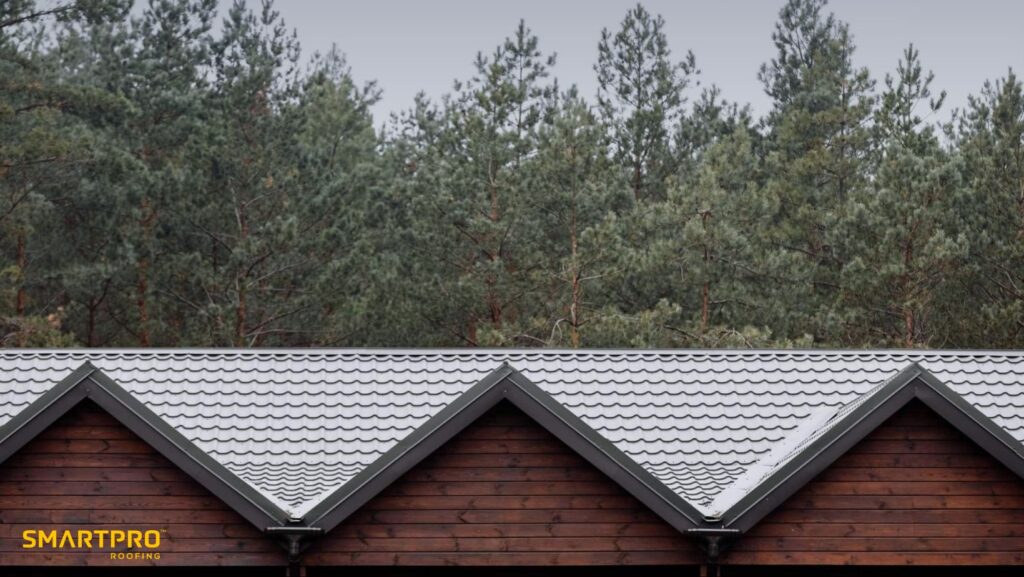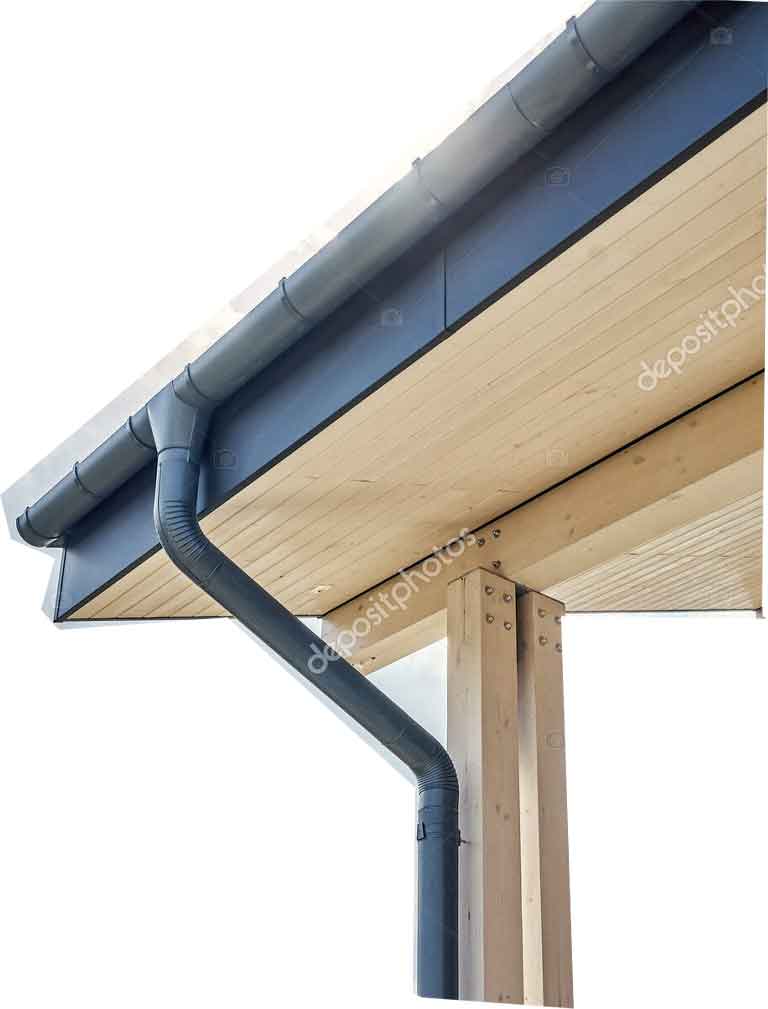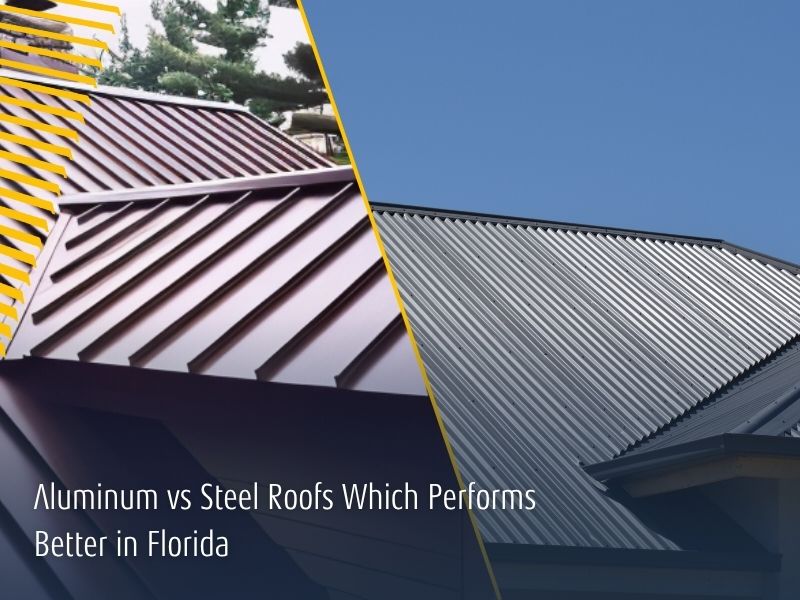When planning a roof replacement, many homeowners wonder: “Are gutters included?” The short answer: No, gutters are usually not included in a new roof installation unless specifically requested. While a roofing contractor focuses on your roof, the gutter system is a separate component. However, replacing or at least inspecting your gutters at the same time as a new roof is often smart, it saves on labor, prevents water damage, and ensures your entire roofing system works together.
This article breaks down everything every homeowner should know about the connection between roofs and gutters: when to replace them together, how much a gutter replacement might add to the replacement cost, and why skipping gutters during a roofing job could lead to costly repairs later.
Do Roof Replacements Normally Include Gutters?

Here’s the truth: gutters are not automatically included in roof replacements. A roofer’s job is to remove your old roof, inspect the deck, replace any rotted fascia, and install the new roof with proper ventilation and flashing. The entire gutter system is considered a separate home improvement project.
That said, some roofing contractors do offer bundled services, meaning they can install gutters and roofs in the same project. This makes sense because your roof and gutters work together to protect your home from rainwater and water damage. Without gutters, a roof might shed water directly onto siding, overhangs, or the foundation, which leads to rot, erosion, and costly issues later.
For most homeowners, the best time to handle gutter replacement is when you replace your roof. It keeps everything in sync, prevents misalignment, and avoids having to remove and reinstall gutters after the roof installation.
Why Gutters Are Important for Every Roof System
A roof without gutters is like having a car without brakes, it technically “works” but leaves you vulnerable to disaster. Every roof is designed to shed water, but if that water isn’t directed away through a gutter system, it causes water damage to siding, soil erosion around the foundation, and even rot along the roof eaves.
Here’s why gutters matter:
- Protect your home from foundation cracks and flooding
- Prevent leaks near the chimney and walls
- Reduce strain on fascia and eaves
- Extend the lifespan of the roofing system
- Prevent ice dams and hail-related issues in colder climates
Even with asphalt shingles or a metal roof, the absence of a functioning gutter system leaves your home vulnerable. Skipping gutters during a roof replacement isn’t just risky, it can shorten the lifespan of your roofing material and lead to costly repairs later.
Signs You Need New Gutters During Roof Replacement
So how do you know if you need to replace your gutters along with your new roof? During a roof inspection, your roofer will look for these red flags:
- Cracks or holes in the gutters causing leaks
- Sagging or pulling away from the fascia
- Visible rot where gutters attach to the roof eaves
- Rust or corrosion in aluminum gutters
- Overflowing during rainstorms despite being clean
- Water pooling near the foundation
- Gutters more than 20 years old (since gutters can last 20–30 years with proper care)
If you see these issues, it’s time to replace your gutters. A new gutter installation alongside a roof replacement saves labor costs and ensures a seamless roofing job.
Should You Install Gutters and a New Roof at the Same Time?

The short answer: Yes, if possible. When you’re already investing in a full roof replacement, it makes financial and structural sense to handle gutter replacement too. Here’s why:
- Cost Efficiency: Installing both reduces overall replacement cost since crews are already on-site.
- Better Fit: Aligning the gutter system with the actual roof ensures water flows correctly.
- Avoids Damage: Removing old gutters after a new roof can damage shingles or flashing around chimneys.
- Long-Term Protection: A coordinated roof and gutter system helps you protect your home from water damage.
That doesn’t mean you always need new gutters. If your gutters are in great shape, a roofer can remove them during roof installation and reinstall afterward. But if they’re old or damaged, it’s smarter to handle both at once.
How Roofing Contractors Handle Gutters During a Roofing Job
So what exactly happens to your gutters during a roof replacement? Here’s what professional roofing crews typically do:
- Inspect Gutters: A thorough roof inspection includes checking the entire gutter system for wear and damage.
- Remove if Necessary: Gutters may be taken down to ensure proper roof installation.
- Protect with Tarp: Crews often use a tarp to prevent debris from clogging gutters during the roofing process.
- Reinstall or Replace: If gutters are still in good condition, they’re reattached after the new roof goes on. If not, it’s time for gutter installation.
A licensed and insured roofing contractor can give you an estimate for handling both your roof and gutters together. They may also give you a quote for just gutter replacement if you’re not ready for a full roof project.
Replacement Cost: Roof vs. Gutters
When budgeting for a roof replacement, it’s natural to ask how much adding gutters will affect the replacement cost. The truth is, costs vary depending on the size of your home, the roofing material, and the different gutter options you choose.
- Roof replacement cost: The national average ranges widely based on asphalt shingles, a metal roof, or premium systems. Expect a roofing job to be the bigger investment since it involves tearing off the old roof, addressing any layers that need removal, repairing fascia, and ensuring proper ventilation and flashing.
- Gutter replacement cost: Installing a new gutter system is far less expensive. The average cost depends on whether you choose aluminum gutters, seamless gutters, or other types. Still, compared to roofing, this is a relatively small expense.
- Bundling together: Having one roofing professional handle both saves time and reduces the chance of misalignment.
Ultimately, your replacement will cost less in the long run if you handle both projects at once instead of separately. Otherwise, you risk having to remove gutters later, leading to more labor and costly repairs later. When budgeting for your roof and gutter replacement, consider the cost and requirements of obtaining a roof replacement permit, which can vary by location.
Different Gutter Systems and Roofing Materials
Not all gutters and roofs are created equal. Choosing the right gutter system depends on your roofing material, local weather, and home design.
- Asphalt shingles + aluminum gutters: The most common residential setup. Affordable and effective for directing rainwater away.
- Metal roof + seamless gutters: A metal roof sheds water faster, so pairing it with durable seamless gutters ensures proper drainage and long-term protection.
- Tile or slate roof: These heavier roofs often require custom-fit gutters and strong fascia boards.
A roofer or roofing contractor can recommend the right roofing and gutter system combination for your home. Remember, the roofing system and entire gutter system work hand in hand to protect your home.
If you’re not sure what type of gutter works with your roof, ask your contractor to inspect your setup and give you a quote. A professional roofing assessment ensures your gutters won’t fail under heavy storms or hail.
What Happens if You Replace Your Roof Without Gutters?

Skipping gutters during a roof replacement isn’t recommended. Here’s why:
- Water Damage Risk: Without gutters, rainwater runs off the roof eaves and overhang, soaking your foundation and causing rot in your siding.
- Leaks and Moisture: Without a proper drainage system, water may back up into the roofing system, leading to leaks near the chimney or flashing.
- Roof Lifespan: A roof without gutters won’t last as long because water exposure shortens the lifespan of your roofing material.
In short, if you replace your roof but ignore your gutters, you’re setting yourself up for damage that isn’t covered by warranties or even by some insurance companies. Handling both at once ensures you truly protect your home.
Do Insurance Companies Cover Gutters with Roof Replacements?
Many homeowners wonder if their insurance company will cover gutters included in a roof replacement. The answer depends on the cause of damage.
- If hail or storm damage destroyed both your roof and gutters, an insurance company may cover both as part of the same claim.
- If it’s damage that isn’t storm-related (like old age or neglect), your insurance likely won’t cover gutter replacement.
- Always check your policy and ask your roofer to document everything during the roof inspection.
Keep in mind: some insurance companies will only pay for the roofing job itself. They may not cover and replace your gutters unless they’re clearly damaged by the same event. That’s why working with a licensed and insured roofer who understands insurance claims is critical.
Why Professional Roofing Matters
In Florida’s storm-prone climate, your roof and gutter system must work together to protect your home from water damage. Replacing both at the same time ensures long-term durability, proper drainage, and fewer costly repairs down the road.
At SmartPRO Roofing, we provide precision installation for complete roofing and gutter systems, using only premium materials designed to withstand Florida’s heavy rains and hurricanes. Whether you need a full roof replacement, upgraded gutters, or both, our team delivers solutions built for lasting protection.
And with our SmartQuote Tool, you’ll see your exact pricing in under an hour using advanced satellite imagery, so you can plan your project with clarity and confidence.
Take the smart step today. Get your exact Roof Quote now with SmartQuote in minutes.
FAQs
- Do all roofing companies replace gutters automatically?
No, most roofing companies focus on the roof itself. You’ll need to request gutter replacement as part of your project. - How long do gutters last compared to a roof?
With care, gutters can last 20–30 years, while a roof might last 25–50 years depending on the roofing material. - Can I reuse my old gutters when getting a new roof?
If your old gutters are in great shape, your roofer may reinstall them after the roof installation. However, if they’re worn or sagging, it’s smarter to upgrade. - What type of gutters work best with a metal roof?
Seamless gutters are a great match for a metal roof since they handle fast-moving rainwater efficiently. - Should I wait until my roof needs replacement to install gutters?
Not necessarily. If your gutters are failing, you can replace them anytime. But combining gutter installation with a new roof is the most efficient choice.











